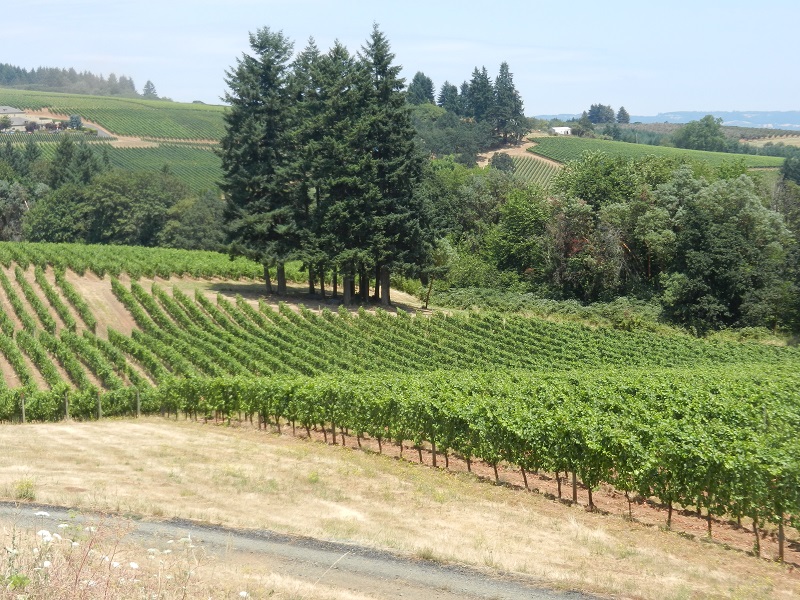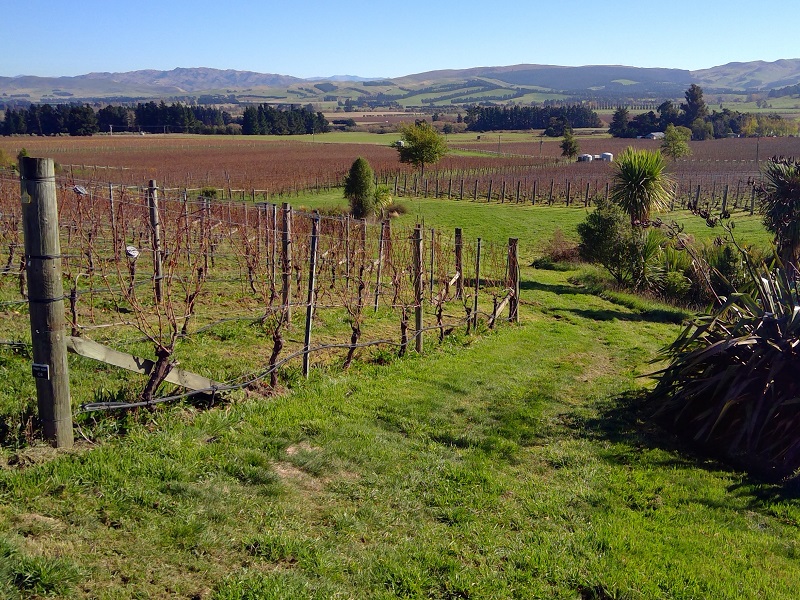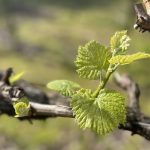Enhancing biodiversity in vineyards is increasingly being recognised as a means of remedying some of the ongoing challenges facing more conventionally-managed properties, such as pest and disease outbreaks.
Biodiversity-based strategies are commonly referred to as ‘green infrastructure’. Olaf Schelezki, Wendy McWilliam and Anna-Kate Goodall, from New Zealand’s Lincoln University, outline some of the issues and opportunities around these strategies, particularly from a New Zealand perspective, ahead of an Australasian symposium on the topic of ‘greening vineyards’ this year.
New Zealand’s international claim to fame is its clean and green image. It underpins the branding and sale of our products, including our wines.
It is therefore essential that we uphold and enhance this image by building on our current successes with respect to adopting sustainable practices — to make them as sustainable as possible while enhancing profitability.
A number of studies have documented environmental impacts and loss of resilience associated with conventional vineyard designs and management practices that result in the significant external input of water, fertilisers, pesticides and/or fossil fuels (e.g., Cerejeira et al. 2000, Komarek et al. 2010).
Efficiency/Substitution farming strategies are popularly applied to reduce these inputs and their impacts internationally.
For example, one such strategy is to increase the efficiency of pesticide use (Spadaro and Gullino 2005), and another substitutes organic for synthetic inputs (Villanueva-Ray et al. 2014).
However, many studies have demonstrated questionable, or only limited, improvements with these strategies (e.g., Point et al. 2012). Furthermore, some impacts, such as low support for indigenous biodiversity, are not being addressed.

In New Zealand, best practice viticulture has been very successfully adopted by our vineyards thanks to the efforts of Sustainable Winegrowers NZ (SWNZ).
However, while these practices mainly focus on monitoring and minimising the use of harmful chemicals, fossil fuels and waste, other challenges are pressing, such as high susceptibility of vineyards to pest and disease outbreaks, and declining soils qualities.
These issues require attention as they also increase the vulnerability of vineyards to adverse economic and weather events such as droughts, heatwaves and severe storm events predicted to occur more frequently with climate change.
It is the enhancement of biodiversity in vineyards that is increasingly seen as providing long-term remedies for these ongoing problems.
Scientists, sustainable certifiers, and farmers in New Zealand, Australia, and around the globe, are increasingly promoting biodiversity-based farming strategies to supplement, and sometimes completely replace, those associated with conventional production systems (e.g., Duru et al. 2015).
In vineyards, these strategies may involve the incorporation of additional production systems beyond grape vines, and the restoration of non-grape vegetation or waterways, referred to as green infrastructure (GI).
For example, studies demonstrate GI provides increased resilience through enhanced sustainable vine water supply and habitat for beneficial insects in control of migrating pests (e.g., Novara et al. 2013, Danne et al. 2010, Bengtsson et al. 2005, Shields et al. 2016, Orre-Gordon et al. 2012).
However, despite scientific support for its benefits, there are few studies demonstrating the application of GI within vineyards (particularly within conventionally designed vineyards), or its benefits to vineyards.
Within vineyards, GI can consist of any non-vine vegetation including cover crops, shelterbelts, remnant bush, grass swards around vineyard blocks, or planted areas associated with cellar doors or entryways.
It can also include waterways, such as streams (and their riparian strips or buffers), ditches or wetlands. Most vineyards have some of these elements, although they may not be recognised as having value by vineyard owners and are therefore not purposely designed to maximize their benefits.
For example, they can be designed to support beneficial organisms for improved pest control (e.g. Danne et al. 2010), improve soil quality (Ripoche et al. 2011), and microclimates in support of vine growth (Shields et al. 2016).
They can also be designed to reduce nitrate pollution within surface and ground water (Novara et al. 2013), enhance indigenous biodiversity (Bengtsson et al. 2015), increase vineyard resilience to pest outbreaks, reduce the transmission of pathogens, and buffer impacts of adverse weather (Nicholas and Durham 2012).
In New Zealand, some of these GI elements (e.g., indigenous vegetation patches by cellar doors and in vineyard rows) have been implemented (e.g., within the Waipara wine region through the Greening Waipara Programme). Few studies, if any, have evaluated the design and effectiveness of these GI elements.
However, to achieve a maximum of their benefits to vineyards and vineyard communities, they need to be designed as integrated GI networks across farms and wine regions in support of specific functions, rather than as isolated components and in an ad hoc manner (McWilliam and Robinson, under review).
In sum, greening vineyards can provide many vineyard benefits beyond those achieved by simply abstaining from using or controlling the application of harmful chemicals.
And, while there is uncertainty regarding the benefits of greening when applied to vineyards, there is much evidence in support of its benefits to other production systems internationally, demonstrating its potential for not only mitigating environmental impacts, but providing other advantages, such as green branding, and increased environmental and economic resilience.
The New Zealand and Australian viticulture industries have an opportunity to build on current successes with respect to the adoption of sustainable practices, and lead the greening of vineyards internationally, incorporating not just one shade of green, but fifty!
Toward this end, Lincoln University Centre for Viticulture and Oenology, and the School of Landscape Architecture seek to help advance the science and implementation of green infrastructure within New Zealand and Australian vineyards.
Our research aims to provide insight into the challenges associated with its science, design, implementation and management, and to develop best practice guidelines for viticulturists.
As a first step, we will be hosting the first Australasian Symposium for Vineyard Greening 2020 in collaboration with the Bragato Research Institute (www.vineyardgreening.com).
We invite researchers and practitioners from New Zealand and Australia to come together at Lincoln University in July 2020, to explore and evaluate the science, design and management of vineyard greening in support of profitable, sustainable and resilient winegrape production systems.
By providing this platform, we hope to encourage new partnerships between Australasian scientists, vineyard owners and managers, to catalyse the transition from conventional to more biodiverse vineyard production systems.
Anna-Kate Goodall is undertaking a Masters of Natural Resource Management and Ecological Engineering at Lincoln University.
She is conducting research in the enablers and barriers for vineyard greening; Olaf Schelezki is a Lincoln University lecturer in the Department of Wine, Food and Molecular Biosciences; and Wendy McWilliam is a Lincoln University senior lecturer in Landscape Ecology at the School of Landscape Architecture.
For information about the Symposium for Green Infrastructure in Viticulture 2020 contact Olaf Schelezki at [email protected] or Wendy McWilliam at [email protected].
This article was originally published in the December 2019 issue of the Grapegrower & Winemaker.





















